Agra needs no introduction to most visitors to India, but there is plenty to see beyond the Taj – read my Agra travel guide for all my top Agra travel tips for getting the most out of your time here, enjoying your stay, and discovering the best of Agra beyond the Taj (and crowds!)
This post contains compensated affiliate links. For more info and my full disclosure, please read here.
Agra Travel Guide – An Introduction
If there’s one place in India that every traveller eventually makes it to, it has to be Agra.
For some – it’s the highlight of a long awaited India trip. For others, it’s with more reluctance or version of I can’t really leave India without seeing the Taj kind of sentiment.
My own story with Agra was fairly simple. Having seen the major tourist sights in Agra on my early trips to India – and witnessed a fair amount of the over-tourism and hassle, I wasn’t really in any hurry to return. It’s not for nothing that Agra has something of a bad reputation among tourists to India for the number of touts and scams that prevail(ed) here.
That was until I came across Ekaa Villa in Agra and their work to show visitors a different side of Agra – one with fewer crowds, less focus on the Taj Mahal, and more focus on culture, community-centric tourism. Reason enough to tempt me back to see how Agra had changed over the years, as a result of the Pandemic, and to find out if my opinion of Agra would fare better a few years on (spoiler – it did)!
In this Agra travel blog I’ll cover where to visit, my top travel tips for visiting Agra, advice for female travellers and much more – read on for what you need to know while planning your trip to Agra!
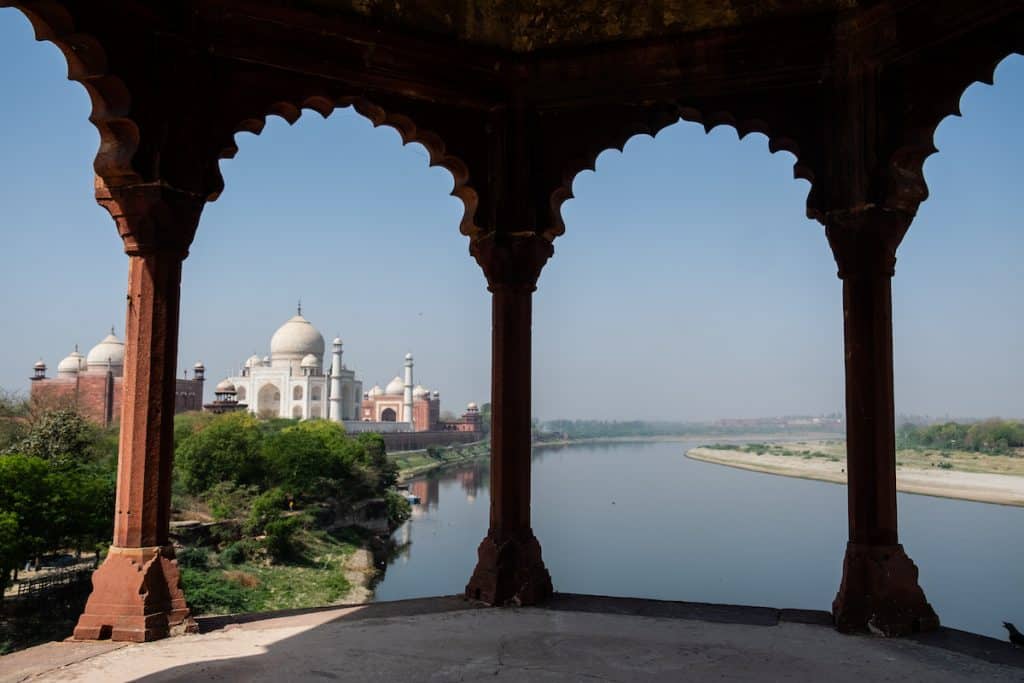
The Best Time to Visit Agra
Set in the heart of northern-central India, Agra sees similar weather to Delhi, but with more variation in heat and cold. At time of writing this blog in May, temperatures in Agra are up to almost 50 degrees celsius at the height of summer, as India is experiencing a heat wave. Suffice to say, I do not recommend visiting Agra in April, May or June as these are when temperatures soar.
The most popular (and best weather-wise) time to visit Agra is between late October and early March. In December & January, Agra gets cold (as in you’ll need a coat cold) and this is when Agra also sees a lot of morning fog. For ideal misty morning Taj viewing conditions, you want both sun and morning mist (seeing the mist rising and evaporating over the Taj is something quite special), which can be more likely to happen with warmer weather in February than in January, when the mist can hang about.
Visiting Agra in monsoon (July – late September) is another option, but weather can still be very hot and sticky (high humidity), when it’s not raining.
Whichever time of year you choose to come to Agra, I recommend avoiding weekends, as this is when the majority of Indian domestic tourists travel, and the city and major sights get very crowded. Note that the Taj Mahal is closed every Friday, and special fees and conditions apply if you want to see the Taj during the full moon.
Where to Stay in Agra
For me, this time one of the highlights of my Agra trip was where I chose to stay.
When it comes to choosing between Agra hotels, unfortunately the options are not always inspiring. There’s a dearth of large (and mostly bland) chain hotels that cater to the wedding and conference market in Agra, and there’s the backpacker hostels of Taj Ganj (some with some great rooftop views it has to be said).
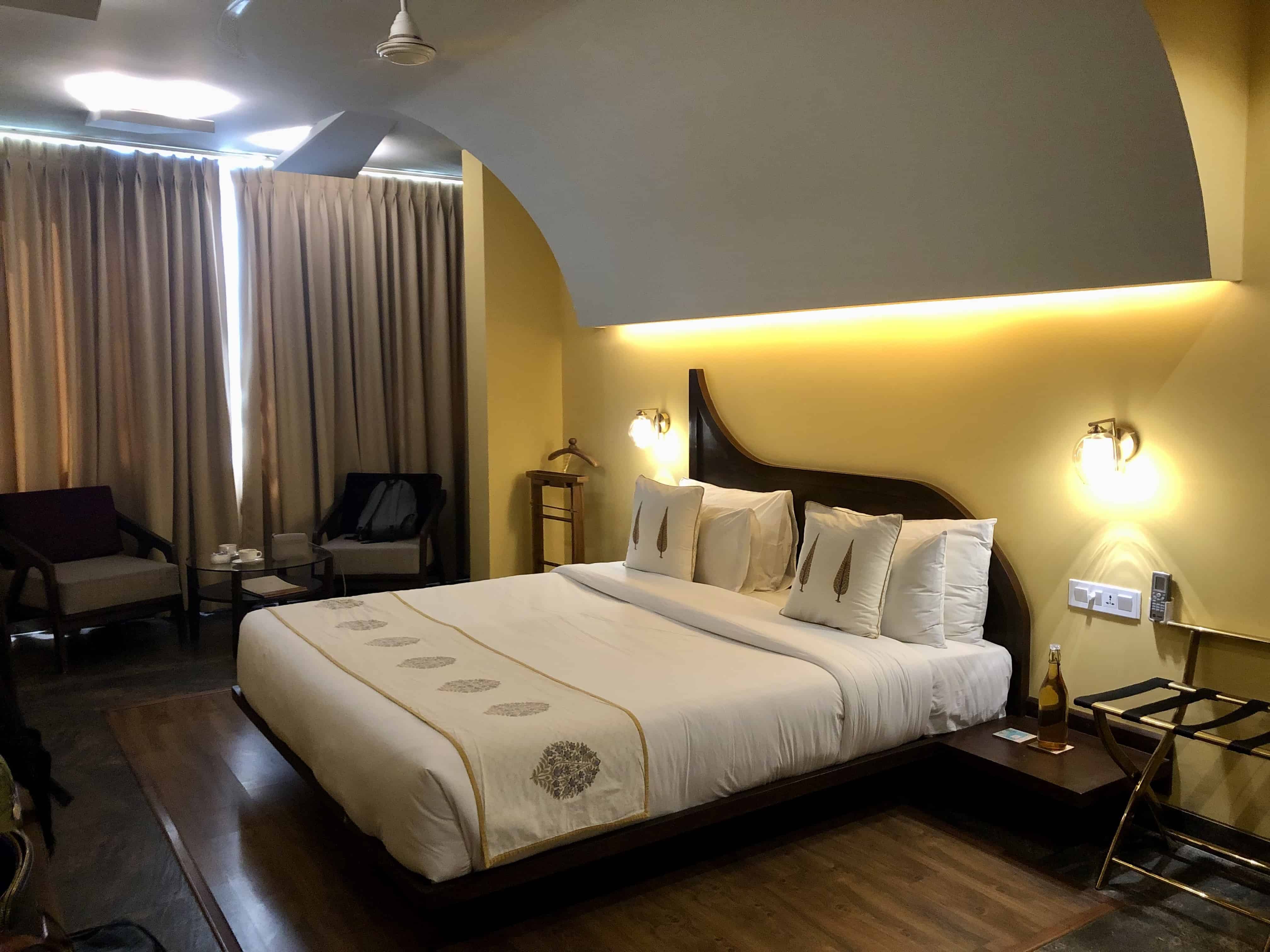
But there’s not much in-between, that has character, represents Agra’s culture, or has the real warmth of hospitality that makes travel in India so special. So I was so happy to stumble upon Ekaa Villa Boutique Hotel & Kitchen which is Agra’s first boutique hotel.
Located in the Taj Nagri phase 2 area just 10 drive minutes from the Taj itself, Ekaa Villa is a peaceful retreat away from the tourist throngs and busy streets of Agra. With just 13 beautifully designed rooms, this boutique hotel reflects the city around it in its design and decor, with a contemporary twist. Rooms feature huge comfy beds, Taj frames on the walls and rain showers. There’s a library on the top flor with some great books and photography of Agra (perfect for unwinding on a hot afternoon or after a busy day), and the restaurant area includes a courtyard area for al fresco dining.
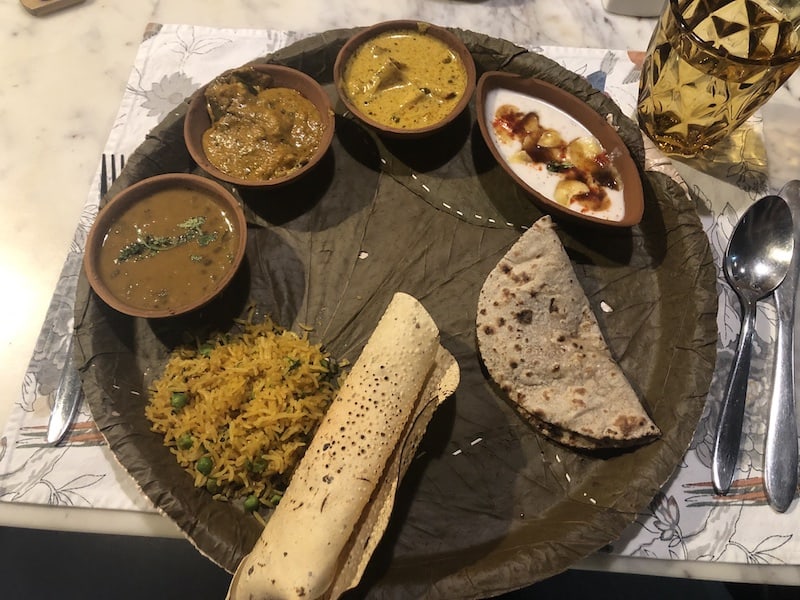
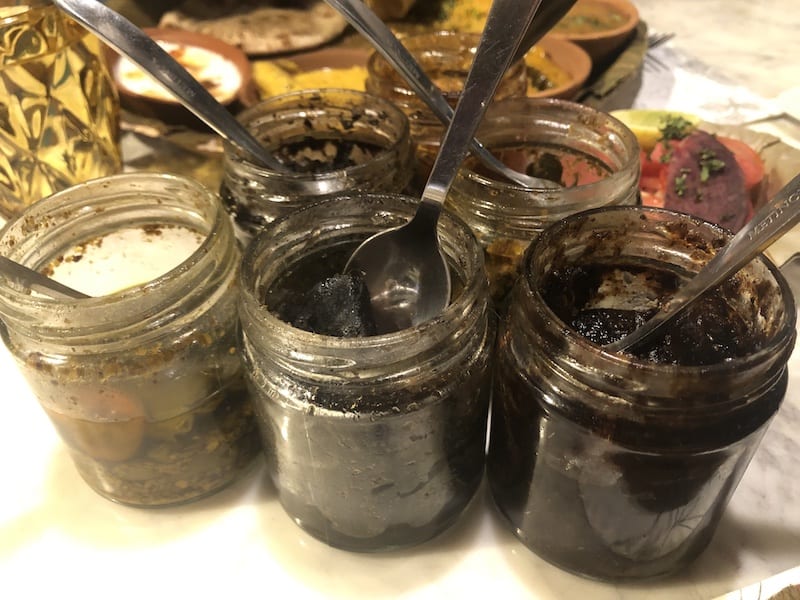
The hospitality here is second to none, with the staff seeming to know exactly when you really need one of their thirst quenching iced-teas, a winning formula when combined with the knowledge and passion for Agra that is infectious from its owners.
I highly recommend staying here if you can – and try out one of their Experience packages (see more below in getting off the beaten path in Agra).
Click here to check rates & availability for Ekaa Villa Boutique Hotel
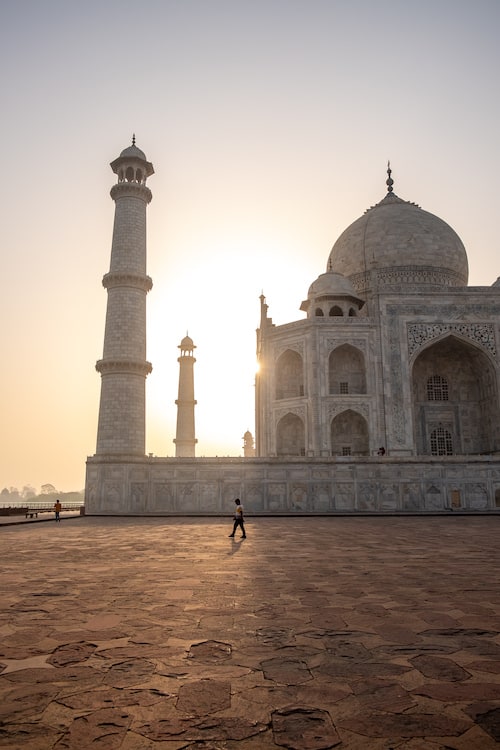
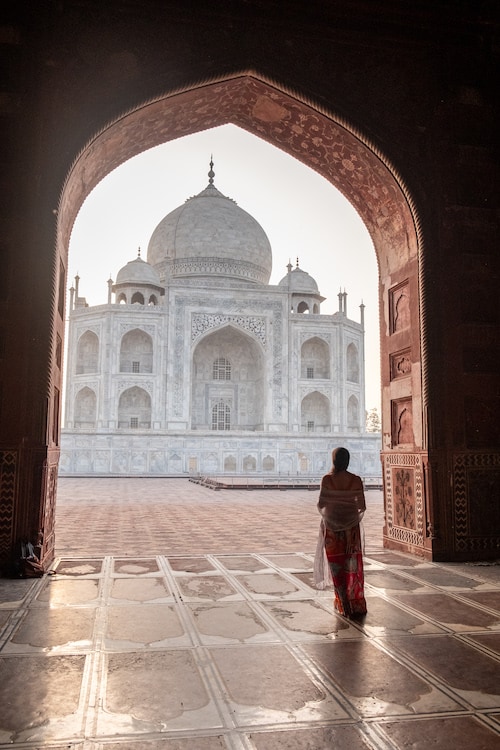
Top Tips for Visiting Agra
As a popular tourist destination in India, Agra needs some pre-planning, especially if its one of your first stops in India. Unfortunately as a place that sees a lot of visitors on whistlestop tours who haven’t done their research, over-charging is common practice, and scams are not uncommon.
Here are some of my tips for seeing the better side of Agra. You can find additional considerations for (solo) female travellers below, too.
- Stay longer than a day. There’s so much more to see in Agra than just the Taj Mahal and the fort, I really recommend staying 2-3 days here if you possibly can to get a real sense of Agra.
- Pre-book your Agra accommodation. The usual rackets operated by rickshaw drivers who will try to take you to hotels that pay them commission is a problem here, which can be avoided if you pre-book and insist on being taken there.
- Negotiate with rickshaw drivers – the prices quoted at popular tourist sights and at railway stations on arrival will be high, so barter them down (by at least 50%). I recommend organising a pickup through your hotel from the train station or airport to cut down on hassle.
- Check the weather and dress accordingly – Agra has very seasonal weather, so you’ll need a decent coat/jacket in winter, and light cotton in hot months. If in doubt, pack layers you can peel off as the weather warms up during the day.
- Ignore people who approach you offering to be your guide / show you around / show you a better view, take your photos, claim to know you (eg from your hotel), or just start following you and telling you about things – in all of these cases people are trying to either hire themselves as your guide (will expect payment) or are unfolding some kind of scam.
- Agra is not the best place for souvenir shopping. Because of the high tourist footfall, souvenirs are overpriced here – try to buy in other parts of India from local crafts (wo)men directly if you can.
- Do enjoy the amazing local food. Agra is famous for its mithai (sweets) and milk produce – Lassi, rabri & hot milk as well as for its non-veg (meat) based food. Pick restaurants and stalls that are busy and have a high turnover of customers, or book a food tour with a local guide who can take you the the best spots. If you stay at Ekaa (above) they can take you for delicious local treats.
- Factor in some down time. As with so many of India’s top destinations, there’s so much to see and do here it can be tempting to pack your days solid with sightseeing – but for best results I find some downtime is helpful to reflect on all you’ve experienced and seen, or just catch an afternoon nap – especially important if you’re travelling to Agra during hotter months!
- Buy your monument tickets in advance, online – see more on how to do it below.
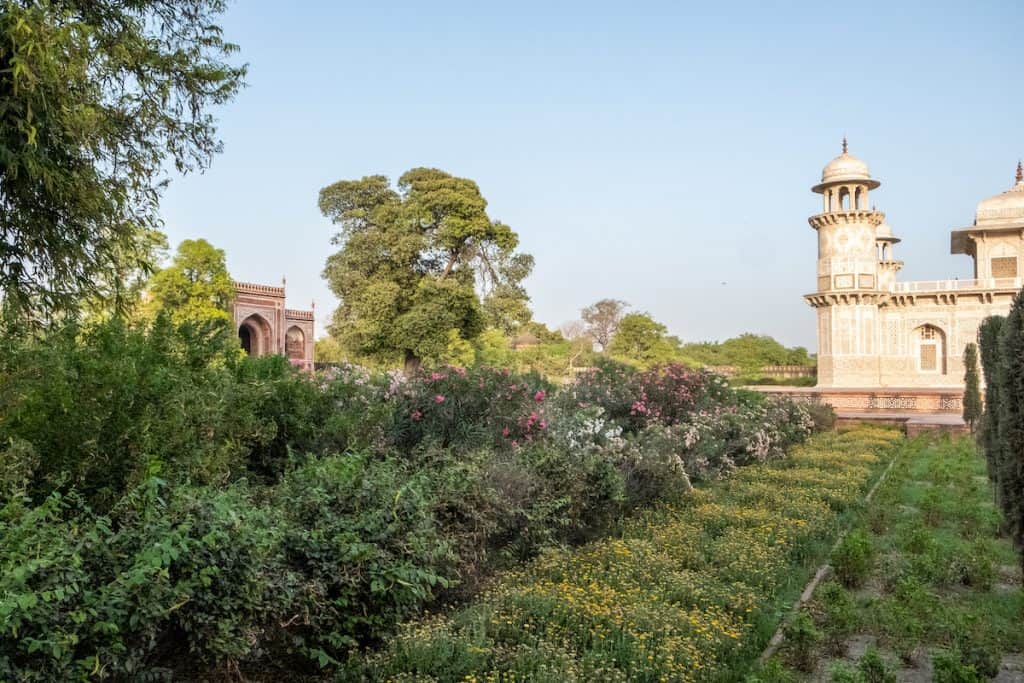
Places to Visit in Agra
Agra is dotted with beautiful monuments, the old city, gardens, sunset spots – far more than you might think on an initial glance! As the former capital of Mughal India (from 1501 until 1638 when Shah Jahan built a new capital in Delhi) , there is arguably nowhere better in India to see stunning Mughal architecture.
Ticketing
One thing to note when planning your visits to the various monuments in Agra and around (including Fatehpur Sikri), is that tickets now have to be bought online and are not available at the monuments themselves (you’ll find signs with a QR code that you can scan). Head to this website to buy your tickets – they can be booked up to a week in advance. If you have trouble with your card being accepted, you could ask your hotel to try and book tickets for you on an Indian card and add them to your bill (foreign cards seem to be hit and miss if they are accepted or not).
You can also buy skip the line tickets here which include an English-speaking guide
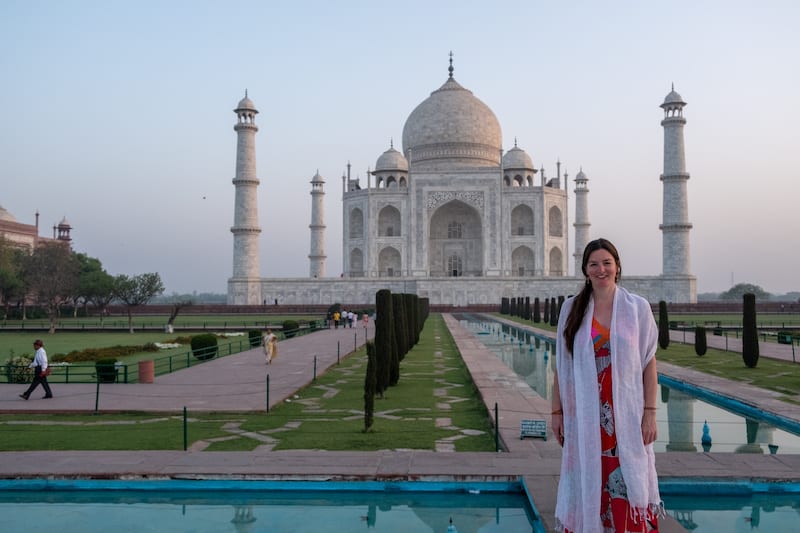
The Taj Mahal
There may be far more to see in Agra beyond the Taj, but you still won’t want to miss it. No matter how many photos you’ve seen (and even if you’ve visited before), there’s nothing that quite prepares you for the first shining white glimpse of the Taj Mahal through the entrance gate, glinting in the misty morning light.
The best time to visit the Taj Mahal, without question, is for sunrise. The monument is open sunrise to sunset, Saturday to Thursday (the Taj is closed every Friday). Sunrise is a little loose as a time… so it’s worth getting there a bit before. In late march, we arrived at the Taj at 06.30 and were a little late, 6am would have been the perfect time to arrive. The reason why sunrise is the best time is a) for the beautiful morning light and b) it’s the only time of day you’ll see the Taj with fewer crowds.
There are three entrances to the Taj Mahal – South (closest to the budget hotels at Taj Ganj), West, and East (closer to the higher end hotels located in the south east of the city). Note that regular auto-rickshaws are not allowed within 500m of the Taj due to pollution, so you’ll have to walk the last stretch or take an e-rickshaw. At Shilpgram (east entrance) the e-rickshaw cost is included in foreigner ticket prices.
The Red Fort
Second only to the Taj Mahal when it comes to top places to visit in Agra, the Agra Fort is one of the finest Mughal forts in India, and a step up on Delhi’s very similar version. Construction of the fort was begun in 1565 by Emperor Akbar, and then finished by his grandson, Shah Jahan, who transformed the military fort into a palace, adding his signature touch of plenty of white marble.
Rising above the Yamuna river, you can easily spend hours wandering around the massive fort. The best time to come is very early morning to avoid the tour groups, preferably while they’re still at the Taj. The fort opens at sunrise. Another bonus for sunrise visitors are the photo ops back over towards the Taj Mahal (you’ll need a decent zoom lens), where if you’re lucky, you’ll catch the sun rising behind the Taj.
Click here for Red Fort skip the line tickets & guided tour options
Itimad-ud-Daulah (Baby Taj)
Probably my favourite monument in Agra, the tomb of Persian nobleman, Mumtaz Mahal’s grandfather, the “Baby Taj” is a treat for the eyes as well as the crowd-weary. The intricate designs and carved marble lattice screens are impressive examples of Persian architecture, and the river-side location makes for a peaceful spot to take in the Yamuna views of Agra.
Best of all, the traditional Persian style gardens are being restored to their former glory – traditionally these contained cypress trees, roses and flowers according to the Persian traditions around gardens. Cypress trees were used to represent life and death, a figure pointing towards the heavens bridging the life and the afterlife. The gardens follow the traditional ‘char Bagh’ style, divided by four water streams.
There’s an interesting display on the restoration of these gardens to the traditional Persian style with trees and flowers, from the British style grass ‘lawns’ that were imposed during colonial times which destroyed the rich diversity of these and other Mughal gardens in Agra.
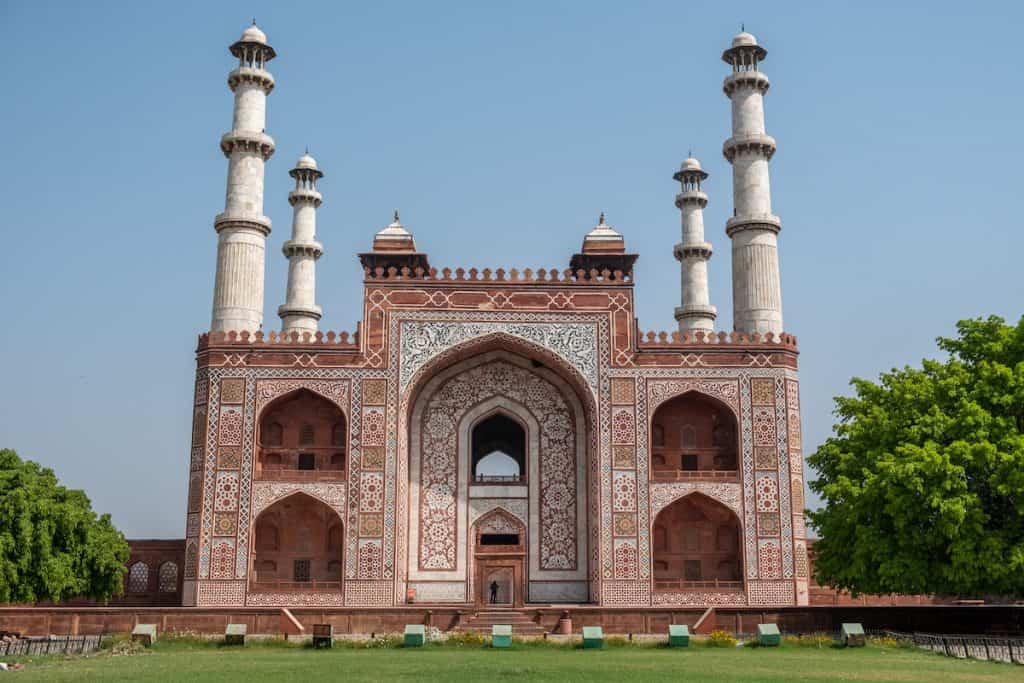
Sikandra / Akbar’s Tomb
The resting place of Emperor Akbar, Sikandra lies 10km to the west of Agra, and is another incredible example of the beautiful Mughal architecture in Agra. Most impressive are the entrance gateway to Sikandra with its four towers, along with the beautifully painted ceilings and walls of the main cenotaph.
The gateway opens out onto expansive lawned gardens (presumably the traditional Persian style was present here before the British lawn-ified them). Deer can be seen wandering around, and the gardens are peaceful spot to relax in.
Unfortunately the tomb itself and several of the outbuildings are a shadow of their former glory, having experienced multiple raids by the local Jat warrior rulers that preceded the Mughal kingdom (the bones of Akbar were removed during one of the Jat raids) – and despite restoration work undertaken by the British during the early twentieth century. But, raids aside, this is still one of the most impressive Agra attractions, which receives a fraction of the visitors compared to other Agra must see sights.
Mehtab Bagh & Taj Viewing Point
The park across the river from the park (Mehtab Bagh) has long been a favourite sunset viewing point for the Taj, and the gardens provide for a pleasant stroll however a new sunset viewing point has now been put in which runs in front of the park directly next to the river – so your view from the park may be obscured by people in front of you.
The viewing point is paid access (with heavy surcharges for visiting at the full moon), and additional camera charges apply.
In my view, there are much better viewing points for the Taj – as these days the Yamuna river flow is far reduced, with the effect being you are rather looking across damp grass up at the Taj, rather than the sunset river reflection you have in your mind. It’s also worth noting that boat trips to view the Taj are now banned.
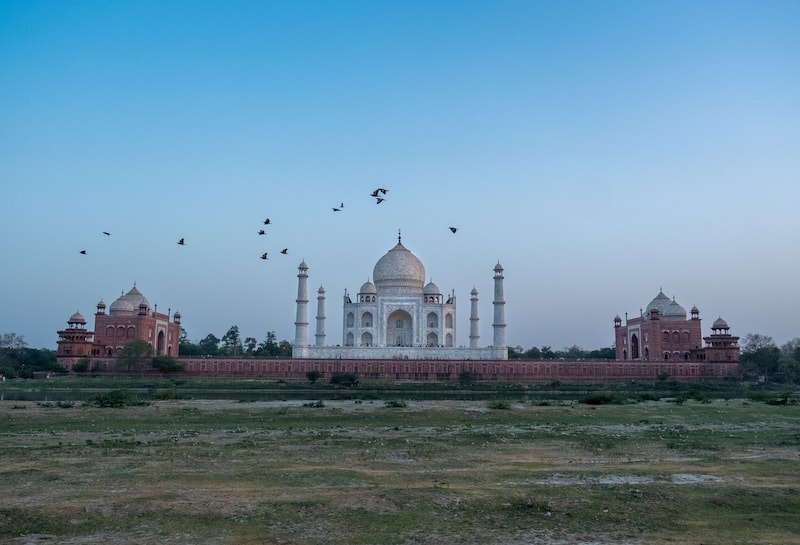
Agra off the Beaten Path & Responsible Tourism in Agra
As home to the Taj Mahal, Agra, unsurprisingly sees a huge influx of tourists (especially in winter, and on weekends) and the volume of footfall has an impact including over-crowding and over-commercialisation. One of the simplest ways to create a better impact on your trip to Agra, is to stay longer and support local businesses.
A surprisingly high percentage of visitors just come for the day, meaning that they don’t spend at hotels, or much at restaurants, or have time to absorb much of the culture, creating a kind of flood-in-flood-out tourism challenge. By doing the opposite and supporting smaller hotels, restaurants and hiring local guides, the positive effects of tourism are magnified. So, come for at least a couple of days if you can, preferably not at the weekend.
Along with Agra’s “big hitters” (above), there are several lesser known monuments around the city to fill your days with and take in on heritage walks – but, beyond a doubt, my favourite way to experience Agra beyond the crowds was on the experiences (short tours) that Ekaa Villa arranged for us.
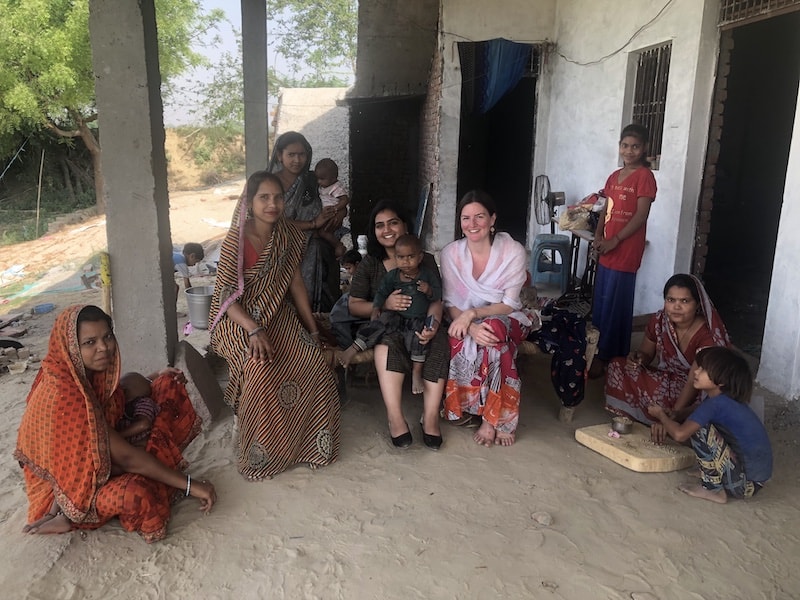
A highlight was walking through rural villages on the outskirts of Agra, complete with chai-stops at villagers’ homes, and wandering to the edge of wheat fields for what turned out to be some of the most stunning views of the Taj I’ve seen – with no-one else around.
You also do not want to miss out on Agra’s food scene, and by that I don’t mean sticking to tourist-focused restaurants at hotels. Take a trip to the halwaais and sweet makers in old Agra on a food tour, and make sure there’s room in your stomach for plenty of lassi.
Here are a few responsible tourism related organisations to support on your trip to Agra:
- Sheroes Hangout – This cafe is run by local women survivors of acid attacks and domestic violence. Located behind Go Stops Hostel in Taj Nagari Phase 1.
- Agra Heritage Walks – Specialise in walks run by local artists and off the beaten path in Agra
- Ekaa Experiences – Secret Taj walks and excursions for those staying with Ekaa Villa
- Wildlife SOS – The award-winning Indian wildlife conservation group has a nearby sloth bear rescue centre outside of Agra as well as its Elephant rescue centre at nearby Mathura (2 hours drive from Agra). Both are open to visitors on prior arrangement.
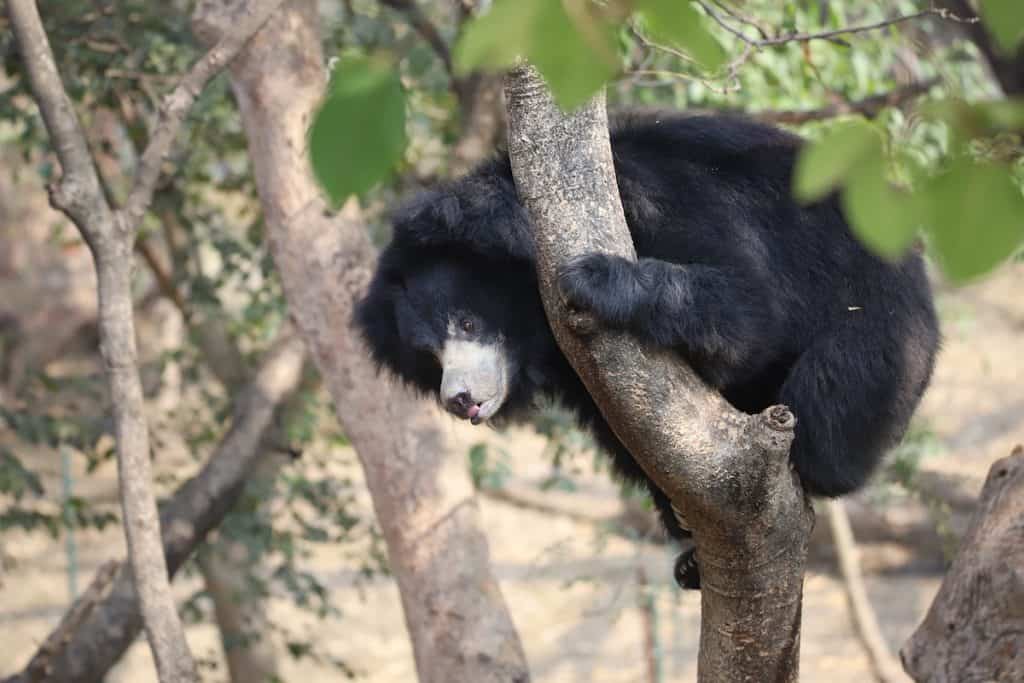
Agra for Solo Female Travellers
Located in western Uttar Pradesh, Agra is one of India’s more conservative parts of the country, and although many solo female travellers (including me) visit Agra with absolutely no problem, it’s advisable to think and plan ahead to get the best experience out of your trip.
Here are a few tips:
- You probably know this already, but Agra is not Goa. Leave the shorts firmly in your bag, and see my what to wear in India post here. The advice for ‘conservative India’ applies here
- You don’t need to cover your hair to enter most monuments here, but dressing respectfully is appreciated (no bare limbs)
- Book hotels / homestays with reviews from other solo female travellers ahead of time (Ekaa is a great choice which gets lots of solo female travellers)
- For some of the larger Agra sights such as Sikandra, I recommend hiring a guide – as grounds can be big and there can be groups of men loitering. Book a guide through your hotel or through a pre-booked tour, not someone who claims to be a guide outside sight entrances. (You don’t need a guide for the Taj Mahal which is always busy)
- If you’re going to Fatehpur Sikri, you definitely do need a guide, as sadly the place is full of scammers and touts (and for this reason has been removed from many tour itineraries). I recommend pre-booking a trip and transfer online such as this one or via your accommodation in Delhi or Agra.
- Avoid heading out at night on your own in Agra as a solo woman. If you do want to go out at night, use Uber, or better book a trusted driver through your hotel who will wait for you and get dropped door-to-door. If you’re in a mixed group, going out is no problem, but don’t wander late at night un-necessarily.
- It’s not recommended to go down to the river or remote sunset spots on your own for safety reasons (think groups of men loitering).

Getting to and from Agra
Agra is well connected to Delhi, Jaipur, Lucknow, Varanasi and many other Indian cities.
Train: Agra is very easy to reach by train – but be aware that Agra has several train stations so do check which yours comes into and leaves from. Agra Cantt (Cantonment) is the largest with the majority of trains arriving into and out of. To or from Delhi, the best train to get is the 12050 / 12049 Gatimaan Express – currently one of India’s fastest trains – which runs between Hazrat Nizamuddin in South Delhi to Agra Cantonment.
Book your Delhi-Agra train tickets here
Or – if you like the sound of going to Agra by train from Delhi but would rather someone else did the planning, you can book this Agra day trip by train tour.
Air: Flights from major Indian cities connect to Agra’s airport, which is located 13kms from Agra city.
Road: Agra is a quick 2-3 hour drive of around 185kms from Delhi along the Delhi-Agra Yamuna expressway. You can book a taxi, inter-city Uber, or take one of the many buses serving the Delhi-Agra route.
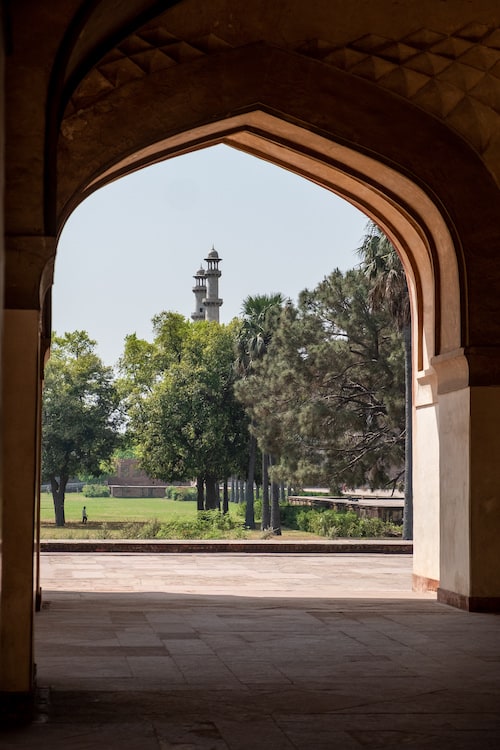
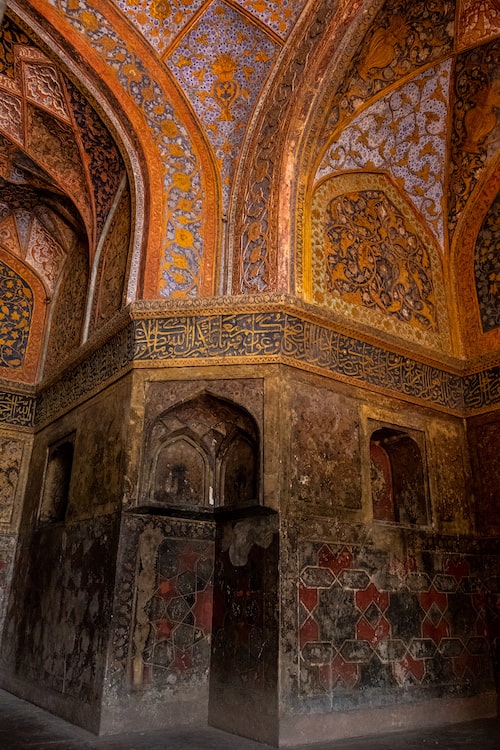
Agra Travel Guide FAQ’s
When is the Best Time to Visit Agra?
October – March is the best time weather-wise. December and January are the coolest months, but also attract the most crowds, so times like late October and late February are a great idea. Whenever you visit, try to avoid weekends if you can.
What should I wear as a Female Traveller to Agra?
Agra is located in one of the more conservative areas of India, so I recommend covering your legs down to at least your knees, shoulders and avoid any strappy, low cut revealing clothes. Leave the shorts in your bag for Goa. Maxi dresses (no big slits) are a good option, as are maxi skirts with a t-shirt or top (plus they’ll look good in your photos). Scarves are super-useful for covering up when need be.
What do I need to know about visiting the Taj Mahal?
The Taj Mahal is open daily except Fridays, and tickets need to be bought in advance, online, using the Architectural Survey of India payment portal (link above). At time of writing (April 2022), the rate for foreign visitors is 2500 rupees. There are 3 entrances (west, south and east), with the most useful depending on where you are coming from (see above). The best time to visit the Taj is at sunrise, for beautiful light and fewer crowds. Separate pricing applies for visiting the Taj during the Full Moon and days surrounding it.
Editorial note: Thank you to Ekaa Villa for hosting my stay with them – as usual this doesn’t affect my thoughts, ideas and recommendations!
Plan your Dream Trip to India with Soul Travel India
The Call of Varanasi: Essential Tips for your First Visit